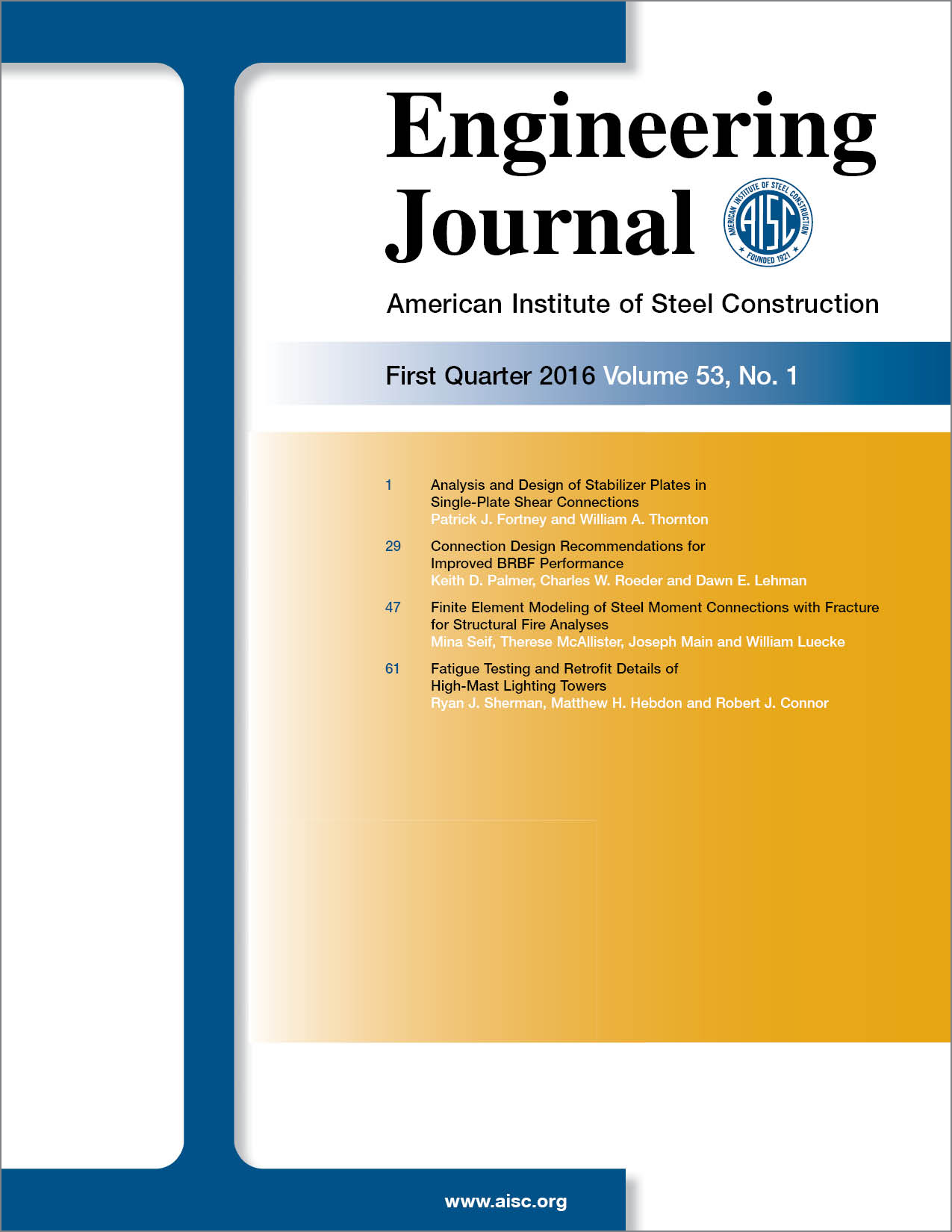Analysis and Design of Stabilizer Plates in Single-Plate Shear Connections
DOI:
https://doi.org/10.62913/engj.v53i1.1095Keywords:
nodal bracing, single-plate shear connections, stabilizer plates, stiffener platesAbstract
Single-plate shear connections experience some magnitude of torsional moment, either due to the lateral torsional buckling phenomena or due to the effects of lap eccentricity. When the required torsional strength of the connection exceeds the available torsional strength of the connection, the designer has two options: alter the geometry of the connection to increase the torsional resistance of the connecting plate or provide stabilizer plates. Thornton and Fortney (2011) provide analysis techniques for accounting for the effects of lap eccentricity and lateral torsional buckling strength. Part 10 of the Manual (Steel Construction Manual, 14th ed., 2011) presents a summary of the equations used for such an evaluation. However, no discussion was provided by Thornton and Fortney with regard to the size and detailing of a stabilizer plate when such a plate is required. This paper presents recommendations for the analysis with regard to appropriate stabilizer plate cross-sectional dimensions and the attachment of the stabilizer plate to the connecting material and support. Three different types of stabilizer plates are presented along with recommendations for the design and detailing of the stabilizer plates; the impact that each type has on the design of the single-plate shear connection and the supporting column is presented as well.

